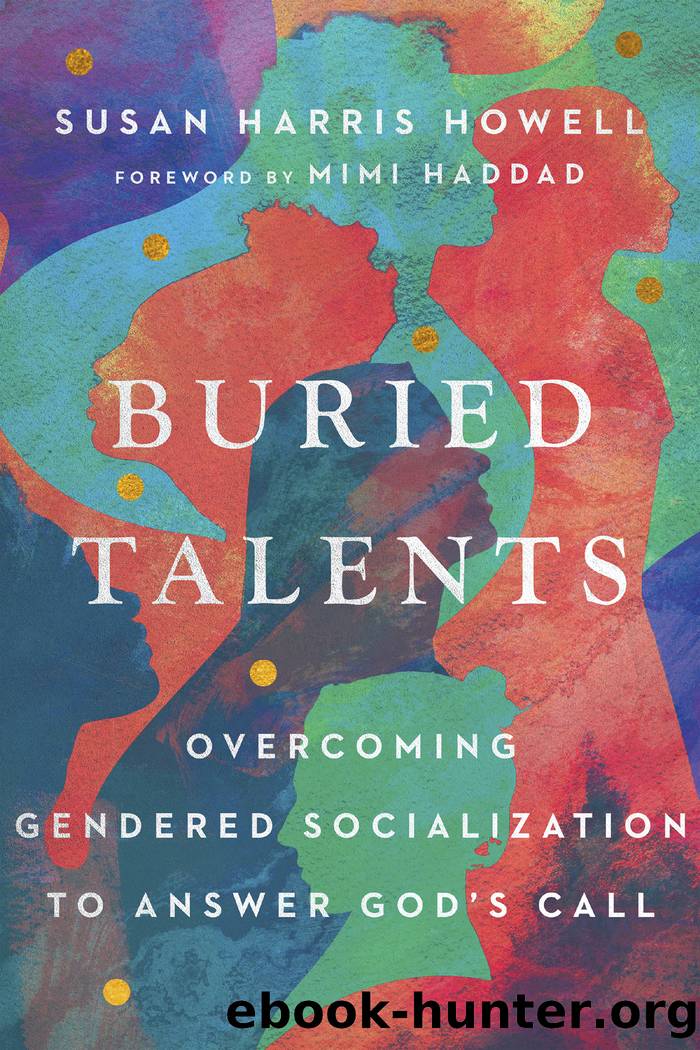Buried Talents by Susan Harris Howell

Author:Susan Harris Howell
Language: eng
Format: epub
Tags: women in leadership;women in the church;gendered socialization;gendered language;gender studies;women's studies;vocational discernment;vocation;career;career choice;career discernment;gender roles;gender and grammar;gender and English grammar;division of labor;gender bias;glass ceiling;women in the workplacegender pay gap;gender bias in secondary education;female leaders in the church;women leaders in the church;female empowerment;empowering women
Publisher: InterVarsity Press
Published: 2022-01-31T12:17:43+00:00
BEHAVIORAL TECHNIQUES
Decide to seek and believe truth. Forgiveness researcher and author Everett Worthington makes a distinction between decisional and emotional forgiveness. Decisional forgiveness is a âbehavioral intention statement . . . to behave toward the transgressor like one did prior to the transgression.â13 By itself, decisional forgiveness does not require that one feel forgiving, but is an act of will that might emerge from oneâs belief system. Worthington does suggest, however, that this decisional component usually leads to emotional forgiveness, which ânecessarily reduces unforgiving emotionsâ and sometimes results in more positive emotions toward the offender.14
Worthingtonâs model would seem to apply as easily to nurturing a more accurate mindset. As such, the act of will would be the decision to believe truthâabout oneself and oneâs abilities and potential. This decision would therefore be the first step in replacing unhealthy, harmful messages with those that are accurate and more productive. The emotional componentâself-confidence, enthusiasm for opportunitiesâwhile not always present at first, can follow.
Realizing that the emotional component of any behavior might very well be absent at first can provide hope that it will come in time and that lasting change is indeed a process. Accepting that the process can begin with nothing more than our statement of will, grounded in our belief system, can reassure us that we have the power to initiate this life-altering process.
Of course, deciding to believe truth dictates that we open ourselves to the source of truth. Prayerful reading of Scripture and other sources like the ones recommended at the end of this chapter make for a good beginning.
Behave as if. Another technique that begins with a change in behavior is to behave as if we already possess the mental framework and affect we are trying to develop. This means that we exhibit the same behavior we would if we believed in ourselves and felt as confident as we hope to one day. We donât wait until the mental framework is in place. We donât hold off until we feel confident. We behave now as if we already had both.
And how do we behave when we have confidence? We typically seek opportunities to use our skills and talents. When presented with a challenge, we meet it rather than backing away prematurely. If others suggest that we are incapable, we know better and carry on.
The first time we attempt this, we might not feel anything close to capable and confident. We might even feel like a phony. But as we continue, we improve our level of skill, and the behavior will feel less forced. We no longer feel as if we are playing a role; instead, itâs as if we have found a part of ourselves we didnât know existed.
As an introvert, I feel uncomfortable the first day of any class in which I donât know many of the students. Seeing thirty pairs of eyes staring back at me is daunting, and I often would rather walk right past the classroom and just keep going. However, when I enter the room, I always behave as if I am completely at ease.
Download
This site does not store any files on its server. We only index and link to content provided by other sites. Please contact the content providers to delete copyright contents if any and email us, we'll remove relevant links or contents immediately.
The 5 Love Languages: The Secret to Love That Lasts by Gary Chapman(9585)
The Space Between by Michelle L. Teichman(6853)
Assassin’s Fate by Robin Hobb(6126)
Wiseguy by Nicholas Pileggi(5669)
Everything Happens for a Reason by Kate Bowler(4677)
Gerald's Game by Stephen King(4571)
Pillow Thoughts by Courtney Peppernell(4207)
A Simplified Life by Emily Ley(4097)
The Power of Positive Thinking by Norman Vincent Peale(4002)
Harry Potter and the Prisoner of Azkaban (Book 3) by J. K. Rowling(3304)
Resisting Happiness by Matthew Kelly(3300)
Being Aware of Being Aware by Rupert Spira(3229)
Girl, Wash Your Face by Rachel Hollis(3204)
The Code Book by Simon Singh(3073)
The Secret Power of Speaking God's Word by Joyce Meyer(2968)
Real Sex by Lauren F. Winner(2966)
More Language of Letting Go: 366 New Daily Meditations by Melody Beattie(2966)
Name Book, The: Over 10,000 Names--Their Meanings, Origins, and Spiritual Significance by Astoria Dorothy(2938)
The Holy Spirit by Billy Graham(2892)
